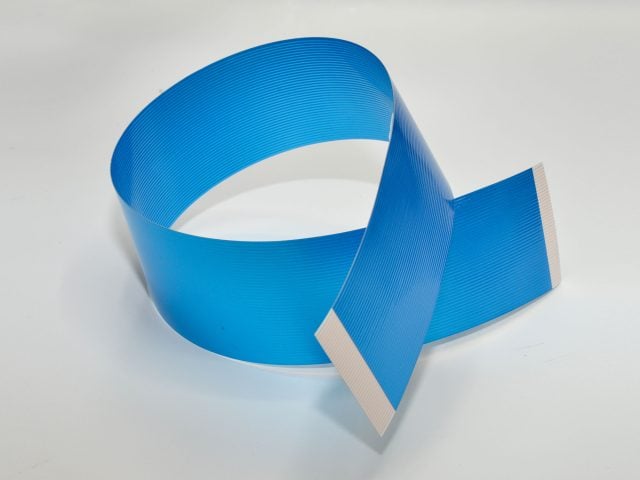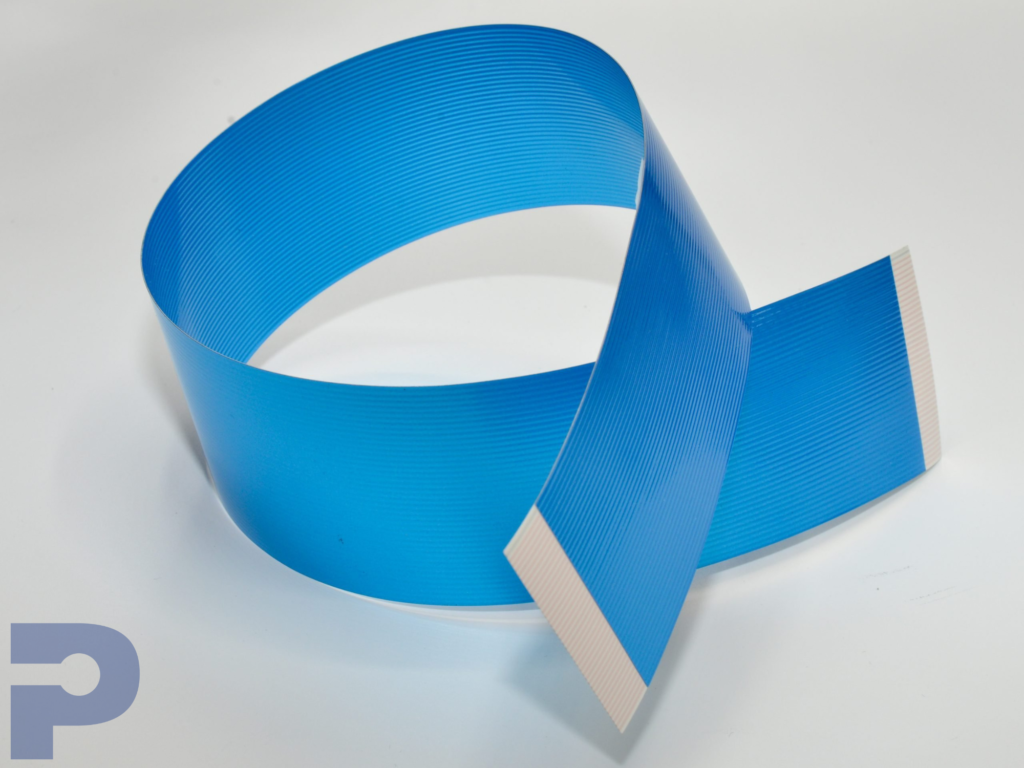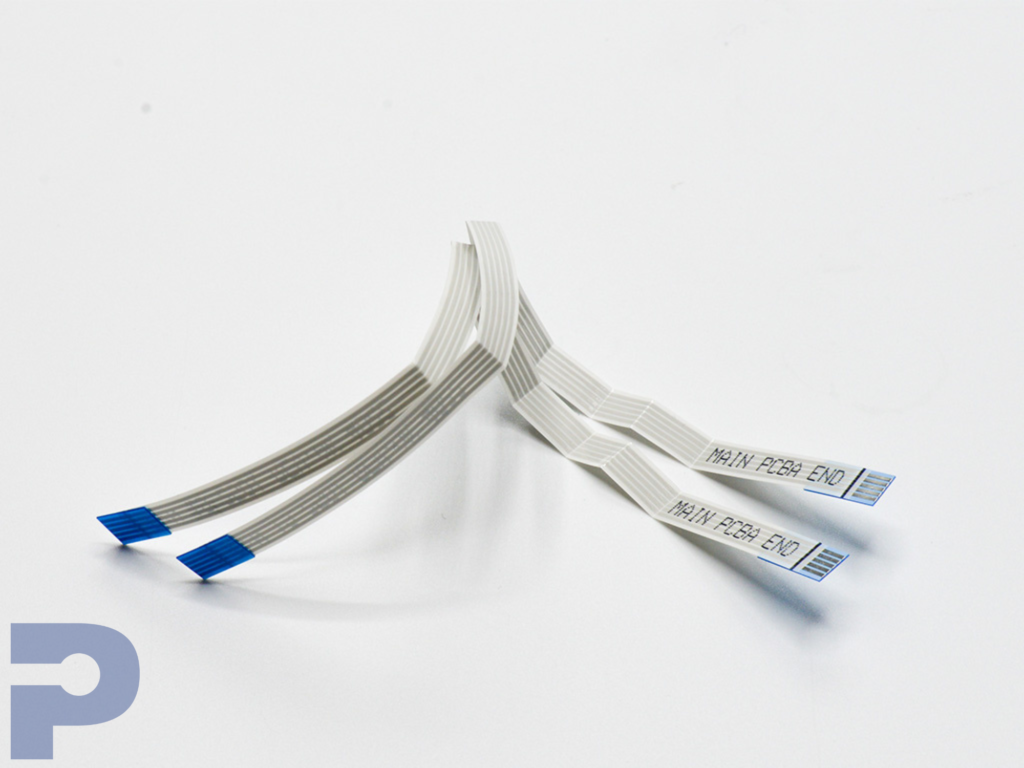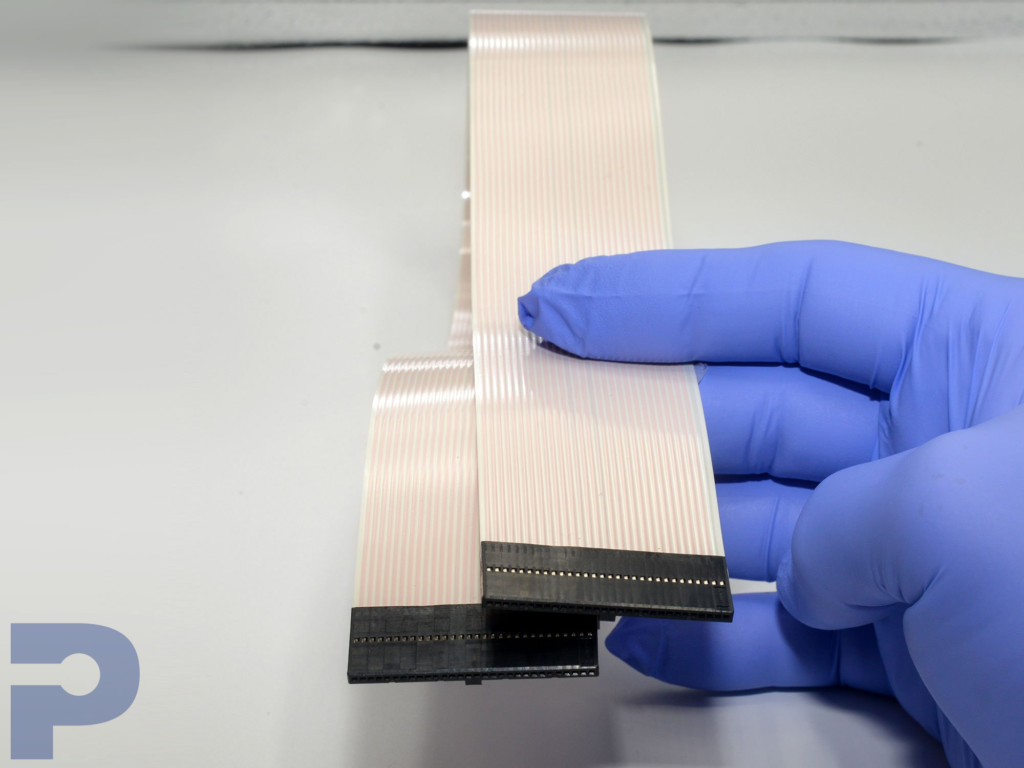For technical information on PICA’s Flat Flex Cables (FFC) capabilities, click the button below.
Benefits
Space Saving: They have a low flat profile, making them ideal for applications where space is limited. Their form fit factor makes for efficient use of available space.
Flexibility: These cables are highly flexible and can be bent, folded, or twisted without causing damage. They can conform to various shapes and fit into tight or irregularly shaped areas.
High Data Transfer Rates: Flat flex cables are capable of transmitting data at high speeds making them suitable for applications that require rapid and reliable signal transmissions.
EMI/RFI Shielding: Some flat flex cables cables come with shielding options to protect against electromagnetic (EMI) and radio frequency interference (RFI). This shielding helps maintain signal integrity and reduces the risk of data corruption.
Cost-Effective: Flat flex cables are generally cost-effective compared to other types of cables, especially when it comes to high density interconnects.
Applications
Consumer Electronics: Flat flex cables are commonly used in various consumer electronics such as laptops, smartphones, tablets, digital cameras, and printers. They provide internal connections between different components and enable the transfer of power and signals.
Industrial Machinery: Flat flex cables for automation systems for interconnecting components, sensors, displays, and control panels. Their flexibility allows for easy installation and maintenance of complex equipment.
Automotive Industry: Flat flex cables are used for internal wiring connecting various components, displays. Sensors and modules. They can withstand vibrations and temperature variations, making them suitable for automotive applications.
Medical Devices: Flat flex cables are used in diagnostic devices, patient monitoring systems, and surgical instruments. They offer compact and reliable interconnections within the limited space of medical devices.
Aerospace and Aviation: Flat flex cables are used for applications like avionics systems, flight controls, and in-flight entertainment systems. Their lightweight and flexible nature contribute to weight reduction and facilitate installation.
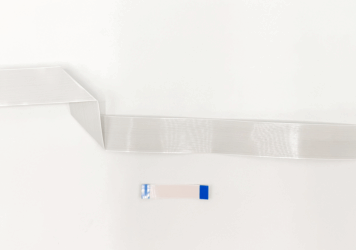
Flat Flexible Cables (FFC): A Cost-Effective and Scalable Interconnect Solution
For engineers balancing performance, flexibility, and cost, Flat Flexible Cables (FFC) remain one of the most efficient...
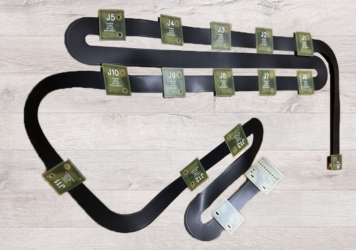
Choosing the Right Manufacturing Method for Extra-Long Flexible Circuits
FPC (Flexible Printed Circuit) manufacturing has evolved significantly, with both panel-based and roll-to-roll (RTR) processing methods widely used. Each method...

Understanding Flexible Printed Circuit (FPC) Cost Drivers
Flexible Printed Circuits (FPCs) are essential components in modern electronics, enabling lightweight, compact, and high-performance designs. However, they come...

Ultra-Thin Flexible Circuits: Overcoming Challenges in Dielectric Substrate
In Part 1, we explored the challenges of manufacturing ultra-thin flexible circuits with a focus on the conductive layers, highlighting...

Flexible Printed Circuit (FPC) Dielectric Materials: Choosing the Best for Your Application
At PICA Manufacturing Solutions (PMS), we specialize in creating Flexible Printed Circuits (FPCs) that enable innovative designs by conforming...
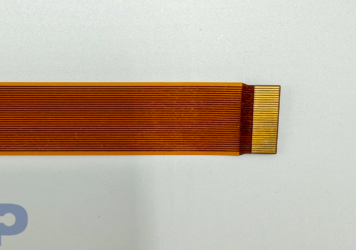
Enhancing Polyimide Surface Properties for Superior Bonding in Flexible Printed Circuits
The general scope of this article is to discuss methods for treating and characterizing the surface of Kapton, a polyimide...
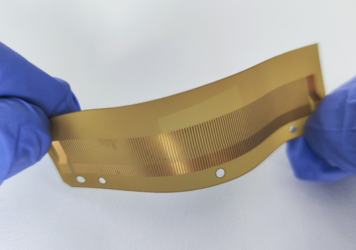
Flexible Printed Circuits: PICA’s Expertise in Material Selection
Flexible Printed Circuits (FPC) are revolutionizing the electronics industry with their unique combination of flexibility, reliability, and lightweight construction....

Shielding Solutions to Protect Your FFC Cables
Ever increasing signal speeds and high noise environments make EMI/RFI shielding an essential requirement for FFC’s (Flat Flexible...
Request Your PICAKit Today
We want you to take a look at what we can produce for you by offering you a PICAKit which includes a variety of flexible pcb, shields, and flat flexible cables.


